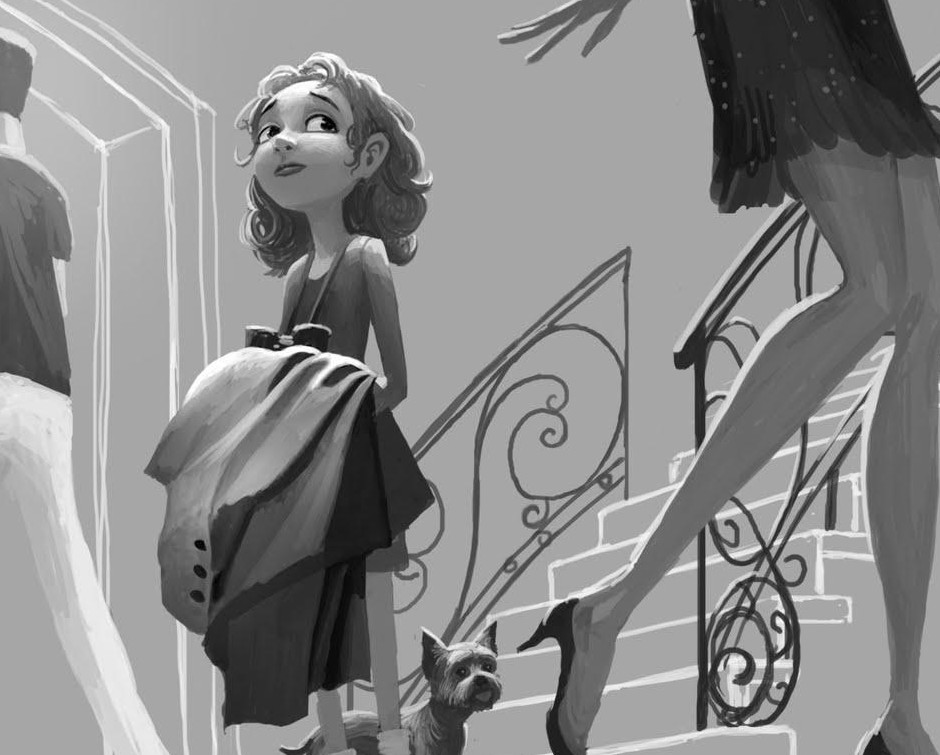Illustrators have graced the pages of hundreds of childrens books with images that have captured childrens imaginations and brought stories to life for years. Many times, adult readers think of the images that once fascinated them as simplistic and sub par to “real art”. If given a closer look however, these images share a strong link with the practices and ideals of abstraction works. According to Dictionary.com, Abstraction is “the act of considering something as a general quality or characteristic, apart from concrete realities, specific objects, or actual instances,” or in otherwords, abstraction allows viewers to see a peice not as reality, but as the essence of reality. Take this illustration by Erwin Madrid for example. It is one of the first image the reader sees in Juniper Berry, a story about a young girl who is fighting to bring her family together again must decide what is real and valuable in life. It is interesting to note that the cieling and doorways are all created from light sketchy strokes that suggest a structure in the background rather than deliniate it. We see a very similar process used by Cy Twombly in his 1960’s Untitled piece that utilizes very isolated, sketchy strokes to create an environment and space. Used in this setting the technique creates an empty, lonely space. Both of Junipers parents are also shown from a low angle and without faces giving them an intimidating and elufe bearing. As abstractionist artist have shown us, it is not the contents of the image that is important, but rather the emotion that those contents evoke. In this case, Juniper is supposed to be a sad, lonely girl.
by Evan Griffin



